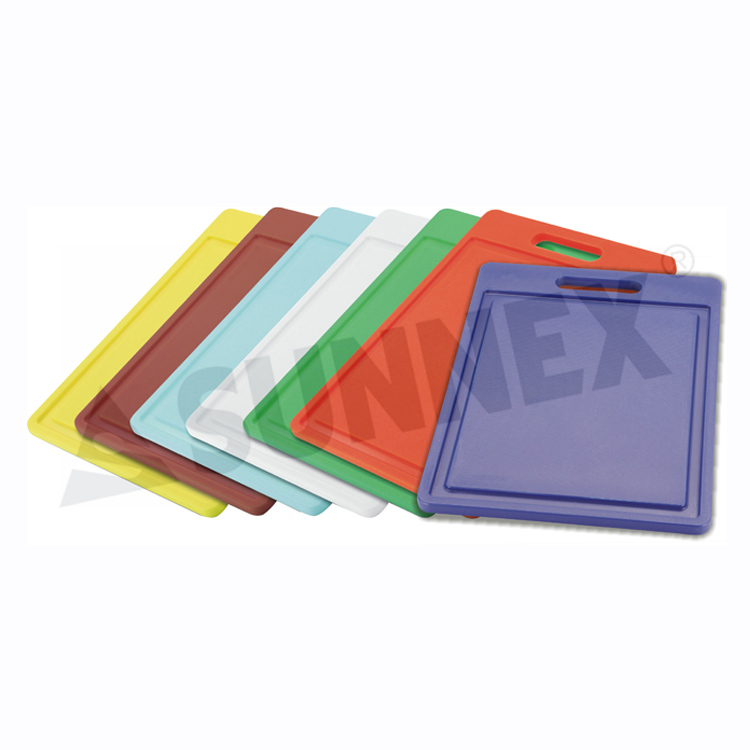Types of chopping boards and their features
2023-12-05
A chopping board, also known as a cutting board, is a flat, durable surface used for cutting and chopping food items in the kitchen. Chopping boards come in various materials, each with its own set of characteristics and considerations. Here are common types of chopping boards and their features:
1. Wooden Chopping Boards:
- Material: Typically made of hardwoods like maple, oak, or acacia.
- Features:
- Gentle on knives, reducing the likelihood of blade damage.
- Natural aesthetic appeal.
- Wooden boards may require more maintenance, such as regular oiling, to prevent drying and cracking.
- Some wooden boards have antibacterial properties.
2. Plastic Chopping Boards:
- Material: Usually made of high-density polyethylene (HDPE) or polypropylene.
- Features:
- Lightweight and easy to clean.
- Less porous than wood, making them more resistant to bacteria.
- Dishwasher safe.
- Affordable and available in various colors to help prevent cross-contamination (e.g., using different colors for meat and vegetables).
3. Bamboo Chopping Boards:
- Material: Bamboo, a grass that is durable and sustainable.
- Features:
- Eco-friendly option.
- Lighter than hardwood but still durable.
- Requires regular oiling to maintain its condition.
- Bamboo has natural antibacterial properties.
4. Glass or Marble Chopping Boards:
- Material: Glass or marble.
- Features:
- Smooth and non-porous surface, making them easy to clean.
- Resistant to odors and stains.
- Glass boards can be heavy and may damage knives over time.
5. Flexible or Silicone Chopping Mats:
- Material: Flexible silicone.
- Features:
- Lightweight and easy to store.
- Dishwasher safe.
- Some have a non-slip base for stability.
- More suitable for lighter cutting tasks.
6. Composite Chopping Boards:
- Material: A mix of materials, such as wood fibers or bamboo particles combined with resins.
- Features:
- Blend the benefits of different materials, combining durability with some resistance to bacteria.
- Generally easier to maintain than traditional wooden boards.
7. Hygienic or Antimicrobial Chopping Boards:
- Material: Some cutting boards are designed with antimicrobial properties.
- Features:
- Intended to inhibit the growth of bacteria.
- Particularly useful in commercial kitchens or environments where hygiene is crucial.
When choosing a chopping board, consider factors such as material, durability, maintenance requirements, and personal preferences. It's often recommended to have multiple cutting boards designated for different types of food (e.g., one for raw meat, one for vegetables) to prevent cross-contamination. Regular cleaning and proper maintenance help ensure the longevity and hygiene of the chopping board.



